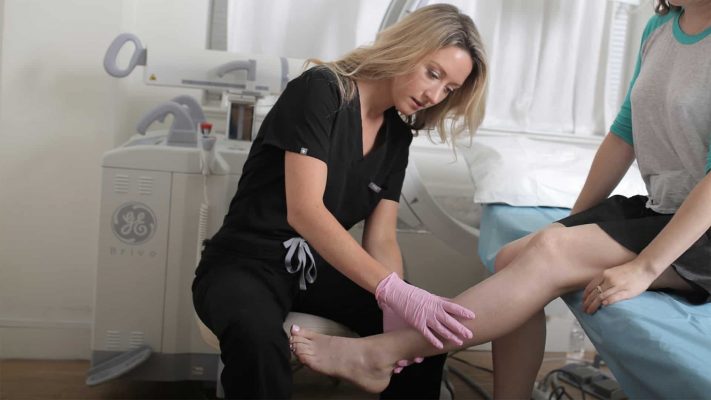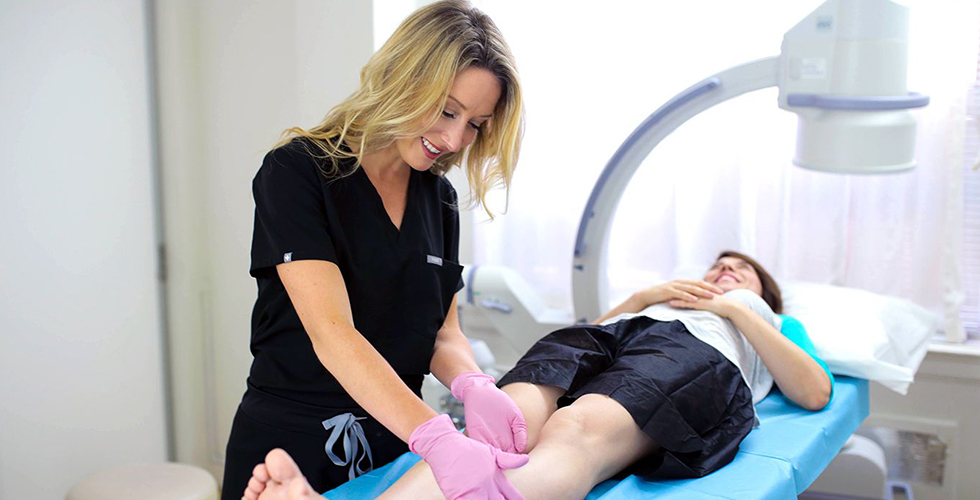Sclerotherapy is the most preferred method used by doctors to treat venous insufficiency. Sclerotherapy is a procedure that is used to treat blood vessels, venous insufficiency, and those of the lymphatic system. A chemical is injected into the vessels which make the damaged veins shrink. Sclerotherapy is an effective treatment to cure varicose veins and spider veins. Sclerotherapy causes infected veins to scar and reroutes the blood through other healthier veins.

Sclerotherapy is an approved medical procedure that removes infected veins from the body and pushes the blood through healthier vessels towards the heart.
The procedure is in use since the 1930s and is a proven treatment to cure venous insufficiencies.
The use of a chemical solution irritates the lining of the infected blood vessels, causing it to collapse and thus blood flow is directed through healthier vessels. Over time the damaged vessels fade away.
When Sclerotherapy must not be done? Sclerotherapy includes injecting a chemical that affects blood vessels. Hence it is not recommended when you are pregnant. But in case of the severity of the issue, it is advised that one must consult the doctor before the treatment. Also, in cases of thrombophlebitis, Sclerotherapy is generally not recommended.
Before performing Sclerotherapy a proper diagnosis is done based on an individual’s venous anatomy, the severity of the issue or if they have any other skin disease or any other deficiency.
Sclerotherapy before and after:
Before coming for the treatment, one must;
- not take vitamin E or any type of non-steroidal anti-inflammatory medicines at least a week before, unless it has been instructed by the doctor,
- Wear comfortable and loosely-fitted clothes,
- Make sure your compression stockings are ready to wear after the procedure.
After Sclerotherapy, you must care to eat healthy and nutritious food and follow the doctor’s advice for better recovery.
Care after Sclerotherapy is important, as the recovery is still in process. The aftercare needed once the Sclerotherapy procedure is complete includes;
- A follow-up visit within the two weeks of the treatment is advised to improve prognosis.
- It is advised that patients should wear compression stockings or support stockings to reduce pressure on the legs and help the upwards movement of blood.
- One should not stand for long, if you have a standing job, you must try to walk after every 30 minutes.
- Raise your leg using a pillow in order to balance the entire body while sleeping.
Sclerotherapy solution includes commonly used agents namely polidocanol or chromated glycerine, hypertonic saline, and sodium tetradecyl sulphate. Hypertonic saline 23.4% concentration has been approved by the USA FDA, but its use in Sclerotherapy is not preferred.
Foam Sclerotherapy is a nominally invasive technique to eliminate ill-favored infected varicose veins and spider veins. A foam sclerosant is injected into the blood vessel to seal it. The blood reroutes itself towards the heart through healthy veins. The procedure takes about 40-50 minutes per session. The sessions depend on the severity of the issue. A sclerosant agent is injected into the veins using a tiny syringe.
Sodium tetradecyl sulphate and chromated glycerine solution are used with the sclerosant agent. This solution has a consistency similar to shaving foam, which is directed into the veins using an ultrasound. This solution makes the infected veins to shrink and collapse. Foam therapy is used to eliminated tiredness and heaviness of the legs due to inflammation or improper blood flow.
Are there any side effects of Sclerotherapy?
Serious consequences by Sclerotherapy are extremely rare, but there can be a few after Sclerotherapy side effects;
- Due to injection swelling or bruising may occur at the site but it will fade away soon,
- Discoloration may occasionally develop,
- One may feel tenderness at the affected area,
- Mild cramping may occur,

No comments:
Post a Comment